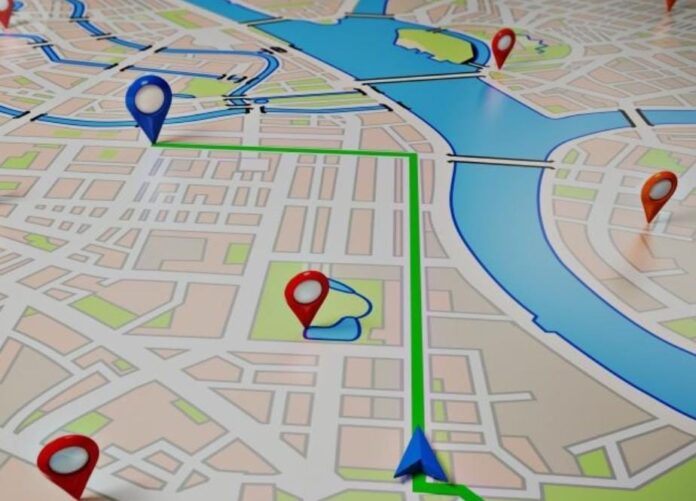
Sanjay Pandey
In recent years, the proliferation of digital mapping services like Google Maps has transformed navigation worldwide. However, in India, reports of misdirection and fatal incidents have raised serious concerns about the reliability of these technologies. Experts argue that systemic challenges within India’s road mapping infrastructure contribute to these issues, highlighting a significant gap in technological adaptation and scientific temperament. This article explores the multifaceted challenges involved, the potential losses incurred, and the steps that both the Indian government and tech companies like Google can take to address these issues.
India’s diverse geography, rapidly evolving infrastructure, and varying road conditions pose unique challenges for mapping services. Unlike many Western countries, where road networks are relatively standardized and well-maintained, India’s road system includes a mix of urban and rural paths that can be poorly documented. This complexity often leads to inaccuracies in navigation applications.
Several incidents have been reported where users following Google Maps have ended up in dangerous situations. For instance, there have been cases where individuals were directed to remote or unsafe areas, leading to fatal accidents. According to a study published by the Indian Institute of Technology (IIT), nearly 30% of accidents in urban areas can be attributed to navigation errors stemming from poorly mapped routes.
One of the key challenges is the quality of data used in mapping services. Roads in India are frequently constructed, modified, or damaged due to weather conditions, and these changes may not be promptly reflected in mapping databases. Unlike countries like the United States, where road information is updated regularly through government initiatives, India’s road data lacks a systematic updating process.
India’s cultural and linguistic diversity adds another layer of complexity. Road names and local landmarks often vary by region, and mapping services may not always account for these variations. This can lead to confusion among users, particularly those unfamiliar with local terminology.
Rapid infrastructure development in India often outpaces the mapping updates. New highways, flyovers, and bypasses are constructed frequently, but digital maps may take time to reflect these changes, leaving users with outdated information. In contrast, countries like Germany have well-coordinated public and private sectors that ensure timely updates to mapping data.
The impact of mapping inaccuracies extends beyond individual inconvenience. It poses significant risks to public safety. The World Health Organization (WHO) estimates that road traffic injuries cost countries approximately 3% of their GDP. In India, where road safety is already a critical issue, misdirection exacerbates the problem, leading to increased fatalities and injuries.
Inaccurate navigation can also affect businesses. Delivery services, logistics companies, and ride-sharing platforms rely heavily on accurate maps. Delays caused by misdirected routes can lead to financial losses, affecting overall productivity. A study by the Indian Logistics Association indicates that logistics inefficiencies cost the Indian economy around $200 billion annually.
The Indian government has recognized the importance of improving digital mapping and navigation services. Initiatives like the National Digital Highway Mission aim to standardize road data and enhance mapping accuracy. However, progress has been slow, and there is a pressing need for collaboration between the government and tech companies.
The government can leverage partnerships with companies like Google to improve data accuracy. Google has been known to employ local mapping teams to gather real-time data, which could be beneficial in a diverse country like India. By integrating local knowledge into their mapping systems, tech companies can create more reliable navigation tools.
Google and other mapping services can adopt more robust data collection methods. This includes crowdsourcing data from users, utilizing satellite imagery, and collaborating with local authorities for real-time updates. For instance, in Japan, Google uses a combination of street view cars and drones to capture detailed imagery, enabling frequent updates.
Implementing user feedback mechanisms can allow users to report inaccuracies directly within the app. This feature has been successfully implemented in other regions, helping to create a more accurate mapping service over time.
Tech companies should prioritize cultural sensitivity in their mapping strategies. This includes understanding local names, landmarks, and routes, ensuring that navigation is intuitive and relevant to users across different regions.
When comparing India’s mapping challenges with those faced by other countries, notable differences emerge. Countries like the US and Germany have established frameworks for regular data updates and public-private collaborations. In the US, the Federal Geographic Data Committee (FGDC) plays a crucial role in coordinating data collection and ensuring accuracy across various agencies.
Conversely, India’s fragmented approach lacks a centralized authority. This disparity highlights the need for a cohesive strategy that involves both government and private sector engagement to address mapping issues comprehensively.
To combat these challenges, it’s essential to cultivate a scientific temperament among stakeholders. Educational initiatives focusing on data science and technology can encourage a culture of accuracy and reliability in mapping. Promoting STEM (Science, Technology, Engineering, and Mathematics) education can help develop a workforce capable of tackling these challenges head-on.
As India continues to embrace digital transformation, the challenges of mapping accuracy must be addressed to ensure public safety and economic efficiency. Collaborative efforts between the government and tech companies, combined with a commitment to improving data quality and user experience, can pave the way for a more reliable navigation system. By learning from the successes of other countries and fostering a culture of scientific inquiry, India can enhance its digital mapping capabilities and mitigate the risks associated with misdirection. The road ahead may be complex, but with concerted efforts, a brighter and safer navigational future is within reach.
( Author, a seasoned bilingual journalist, is an expert on Jharkhand’s sociopolitical landscape. He can be reached at pandeysanjay945@gmail.com)


